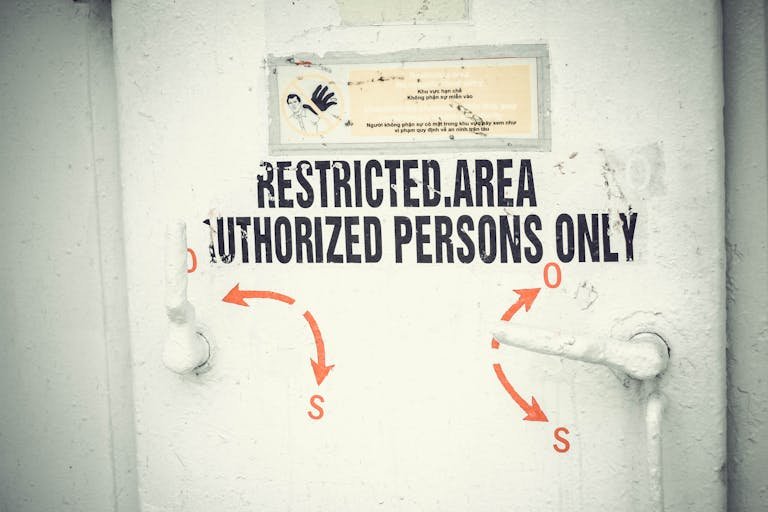Protecting Patient Privacy in the Digital Age: Cybersecurity for Healthcare Providers
Introduction
In today’s digital era, the healthcare industry is increasingly reliant on technology to store and manage patient information. This transition to electronic health records and other digital platforms has revolutionized the way healthcare providers operate, resulting in improved efficiency and better patient care. However, it has also introduced significant risks to patient data privacy. The importance of safeguarding sensitive health information cannot be overstated, especially as cyber threats continue to evolve in sophistication and frequency.
Data breaches in the healthcare sector have become alarmingly common, exposing millions of patients to potential identity theft and personal harm. According to recent studies, healthcare organizations are among the most targeted sectors by cybercriminals, primarily due to the vast amounts of valuable information they hold. A successful attack can lead to the unauthorized disclosure of confidential patient data, which may include medical histories, treatment records, and personal identification details. The repercussions of such breaches can extend beyond immediate financial losses, potentially eroding patients’ trust in healthcare providers and harming the overall reputation of the institution.
Furthermore, inadequate protection measures can have dire legal and regulatory consequences. Healthcare providers are subject to strict regulations—such as the Health Insurance Portability and Accountability Act (HIPAA) in the United States—requiring them to implement robust safeguards to ensure the privacy and security of patient information. Failure to comply can result in hefty fines and legal actions, compounding the negative consequences of a data breach.
As the landscape of healthcare technology continues to evolve, addressing the cybersecurity challenges inherent to this field is imperative. Healthcare organizations must prioritize the implementation of comprehensive cybersecurity strategies to protect patient privacy and maintain the integrity of their services. The following sections will delve deeper into the specific cybersecurity challenges faced by healthcare providers and the best practices they can adopt to mitigate risks.

Patient Data Privacy and HIPAA Compliance
The Health Insurance Portability and Accountability Act (HIPAA) serves as a critical framework for protecting patient data privacy in the healthcare sector. Enacted in 1996, HIPAA establishes stringent regulations governing the use and disclosure of patients’ protected health information (PHI). Healthcare providers, health plans, and other entities dealing with sensitive patient data are mandated to comply with these regulations, which are designed to ensure not only the confidentiality but also the integrity and availability of health information.
HIPAA compliance requires organizations to implement a series of administrative, physical, and technical safeguards. Administrative safeguards may include workforce training on privacy policies, while physical safeguards encompass controlled access to facilities and devices that store electronic health records (EHRs). Technical safeguards, on the other hand, include encryption and secure data transmission methods to protect PHI from unauthorized access. Understanding and adhering to these requirements is essential for healthcare organizations seeking to maintain compliance.
Violations of HIPAA regulations can lead to significant ramifications for healthcare providers, including hefty fines, civil penalties, and even criminal charges for egregious breaches. Common violations often arise from inadequate training, failure to secure electronic communications, or inadequate policies regarding data sharing. Such lapses not only jeopardize patient trust, but they can also expose organizations to legal consequences that can diminish their operational capacity and financial standing.
To mitigate the risk of HIPAA violations, healthcare organizations should conduct regular assessments of their cybersecurity posture. Furthermore, implementing robust data protection policies, creating a culture of compliance through continuous staff training, and utilizing secure technology solutions can greatly enhance patient data security. By taking these proactive steps, healthcare providers can effectively protect sensitive information while ensuring they remain compliant with HIPAA regulations.
Telehealth Security Challenges and Best Practices
The rise of telehealth services has revolutionized healthcare delivery, providing increased access to medical expertise while also introducing unique cybersecurity challenges. Virtual consultations have become common, but they are not without risks. Healthcare providers must be vigilant in understanding the various vulnerabilities associated with telehealth platforms, as these can threaten patient privacy and data integrity.
A primary concern is the potential for unauthorized access to telehealth systems. Security breaches can occur through various means, such as weak passwords, phishing attacks, and unsecured networks. These vulnerabilities can lead to the exposure of sensitive patient information, undermining trust in healthcare providers. Furthermore, inadequate end-to-end encryption may leave data transmitted during virtual consultations susceptible to interception by malicious entities.
To mitigate these risks, healthcare organizations should implement robust access controls, requiring strong, unique passwords and multi-factor authentication for both patients and staff. Regularly updating software and hardware is also crucial, as cybercriminals often exploit outdated systems to conduct attacks. Training staff on the importance of cybersecurity, including recognizing phishing attempts and following protocols for secure data handling, further fortifies the defenses of telehealth platforms.
Another important strategy involves the selection of secure, compliant telehealth solutions. Providers should ensure that the platforms they choose adhere to regulations such as the Health Insurance Portability and Accountability Act (HIPAA), which mandates strict guidelines for handling patient information. Additionally, conducting regular risk assessments will help healthcare entities identify weaknesses in their telehealth services and enhance their overall cybersecurity posture.
By addressing these cybersecurity challenges and implementing best practices, healthcare providers can protect patient privacy effectively while continuing to benefit from the convenience of telehealth services.

Emerging Threats in Healthcare Cybersecurity
The landscape of healthcare cybersecurity is continually evolving, with new threats emerging that pose significant risks to the privacy and security of patient information. One of the most pressing concerns is the rise of ransomware attacks, where cybercriminals encrypt critical data and demand payment for its release. These attacks disrupt healthcare operations, jeopardizing patient care, and causing financial losses. Healthcare organizations must adopt robust cybersecurity strategies to mitigate the impact of such incidents, including regular data backups and comprehensive incident response plans.
Furthermore, the increasing integration of the Internet of Things (IoT) within healthcare settings introduces unique vulnerabilities. Medical devices, ranging from imaging machines to wearable health monitors, often lack adequate security measures, making them attractive targets for hackers. The interconnected nature of these devices means that a single compromised unit can potentially expose an entire network. It is crucial for healthcare providers to prioritize the security of these devices by implementing strong access controls and real-time monitoring to identify any anomalous behavior.
Social engineering tactics represent another growing threat in the realm of healthcare cybersecurity. Cybercriminals often utilize psychological manipulation to deceive employees into divulging sensitive information or granting access to secure systems. This can involve phishing emails, pretexting, or baiting techniques that exploit human vulnerabilities. To combat this, healthcare organizations should invest in regular employee training on recognizing such tactics and reinforcing the importance of maintaining strict data access protocols.
In order to effectively mitigate these emerging threats, healthcare providers must remain vigilant and proactive. Staying informed about the latest trends in cybersecurity is essential for developing comprehensive defense strategies. By fostering a culture of cybersecurity awareness and utilizing advanced technological solutions, healthcare organizations can enhance their ability to protect patient information against evolving cyber threats.
Cybersecurity Training and Awareness
In an era where digital technology plays a pivotal role in delivering healthcare services, the need for comprehensive cybersecurity training for healthcare staff cannot be overstated. As healthcare providers increasingly integrate electronic health records (EHRs), telemedicine, and other digital tools, the exposure to potential security threats also heightens. Training programs focused on healthcare cybersecurity equip employees with the necessary skills to safeguard patient information and respond effectively to potential data breaches.
Effective training strategies should encompass a variety of learning formats, catering to diverse learning preferences among staff. Workshops, online courses, and simulated phishing exercises can all contribute to a well-rounded training program. These initiatives should cover topics such as identifying phishing attempts, understanding the importance of strong passwords, and recognizing the significance of patient privacy within the context of data protection regulations like HIPAA. Regularly updating training content ensures it remains relevant in the ever-evolving landscape of cybersecurity threats.
Cultivating a strong cybersecurity culture within an organization is vital for sustaining effective practices. This entails not only providing initial training but also fostering an environment where employees feel empowered to prioritize security in their daily tasks. Encouraging open communication about cybersecurity concerns and facilitating regular discussions on best practices can significantly enhance awareness. Furthermore, implementing a system where staff can report suspicious activities or potential vulnerabilities protects the organization’s assets and strengthens the overall defense against cyber threats.
Ultimately, fostering cybersecurity awareness within healthcare organizations is an ongoing process that requires commitment at all levels. By investing in robust training programs and nurturing a proactive culture, healthcare providers can significantly enhance their ability to protect patient data and respond adequately to the myriad challenges presented by the digital age.
Best Practices for Safeguarding Patient Information
In the rapidly evolving landscape of healthcare, the protection of patient information has become a paramount concern for providers. Implementing robust cybersecurity measures is essential for keeping sensitive data secure. The following best practices serve as a comprehensive framework for healthcare organizations aiming to enhance their cybersecurity posture.
Firstly, developing and enforcing a detailed cybersecurity policy is crucial. This policy should outline specific protocols for data access, sharing, and storage. Training staff regularly on these policies ensures that employees are well aware of their responsibilities in protecting patient information. Furthermore, organizations should establish a culture of security within the workplace, encouraging vigilance and prompt reporting of suspicious activities.
Secondly, adopting advanced technology solutions can significantly bolster defenses against cyber threats. Healthcare providers should invest in encryption technologies to safeguard sensitive data both in transit and at rest. Firewalls and intrusion detection systems can serve as barriers against unauthorized access. Regular system updates and patch management are necessary to address vulnerabilities in software applications. Implementing multi-factor authentication (MFA) adds an essential layer of protection, making it more difficult for unauthorized individuals to gain access to systems containing sensitive patient information.
Moreover, regular audits and risk assessments can help organizations identify any gaps in their cybersecurity measures. Such assessments should evaluate not just technological defenses but also policies and practices in place. Engaging third-party security experts for comprehensive assessments can provide valuable insights and recommendations for improvement.
Lastly, having a robust incident response plan is critical for minimizing damage in the event of a breach. This plan should detail steps for containment, investigation, and communication with affected parties, ensuring compliance with legal requirements regarding data breaches in healthcare. By leveraging these best practices, healthcare organizations can effectively safeguard patient information from increasingly sophisticated cyber threats.

The Role of Technology in Cybersecurity
In the healthcare sector, the importance of cybersecurity cannot be overstated, given the sensitive nature of patient data. The integration of technology into cybersecurity practices significantly enhances healthcare providers’ ability to protect this vital information from unauthorized access and breaches. Various technological tools and solutions have been developed to bolster these efforts, chief among them being encryption, secure access controls, and continuous monitoring systems.
Encryption serves as a fundamental layer of protection, converting patient data into a format that is unreadable to anyone without the appropriate decryption key. This ensures that even if data is intercepted during transmission, it remains secure and unusable to potential cybercriminals. Healthcare providers must implement strong encryption protocols for data at rest and in transit to safeguard sensitive information effectively.
Another critical component of cybersecurity in healthcare is the use of secure access controls. Implementing robust authentication mechanisms ensures that only authorized personnel have access to patient data. Multi-factor authentication (MFA) and role-based access control (RBAC) are two methods that help ensure that individuals can only access the information necessary for their specific roles. By limiting access, healthcare organizations can significantly reduce the risk of data breaches and insider threats.
Continuous monitoring systems play a vital role in identifying potential cybersecurity threats before they escalate. These systems utilize advanced analytics and machine learning algorithms to monitor network traffic and detect anomalies that may indicate malicious activity. By maintaining vigilant oversight, healthcare providers can respond swiftly to threats, mitigating potential damage and ensuring the integrity of patient information.
Utilizing these technological solutions not only enhances the overall cybersecurity posture of healthcare organizations but also instills greater confidence in patients regarding the safeguarding of their personal information. Through a coordinated effort in adopting and integrating these innovations, healthcare providers can greatly mitigate the risks associated with data breaches and cyber threats.
Building a Response Plan for Data Breaches
In today’s healthcare landscape, the risks associated with cybersecurity threats are ever-present, necessitating a proactive approach to data breach response. For healthcare organizations, establishing a robust response plan is crucial in mitigating the effects of breaches and maintaining patient trust. An effective response plan encompasses several key elements: identification, containment, eradication, recovery, and communication strategies.
The initial step in any response plan involves swift identification of a data breach. Organizations must deploy monitoring tools and threat detection systems that enable rapid recognition of unauthorized access to patient data. Once a breach is identified, containment becomes a priority. This stage involves isolating affected systems to prevent further unauthorized access, which, in turn, protects sensitive patient information while minimizing damage.
Subsequently, eradication efforts must be undertaken to remove the source of the breach, ensuring that any vulnerabilities within the healthcare organization’s defenses are addressed. This may involve software updates, enhancing firewall protections, or reinforcing access controls to secure patient data. Recovery focuses on restoring systems and data to normal operation while implementing improvements that solidify the organization’s cybersecurity posture.
Equally important to these technical responses is the development of effective communication strategies. Informing affected patients, regulatory bodies, and stakeholders promptly about the breach is vital for transparency, and it helps maintain patient trust. Clear communication can also include suggestions for patients on how to protect their information post-breach.
In summary, the establishment of a comprehensive data breach response plan is essential for healthcare organizations aiming to navigate the complexities of modern cybersecurity risks. By addressing identification, containment, eradication, recovery, and communication, these organizations can significantly reduce the impact of data breaches and safeguard the privacy of their patients.
Legal and Regulatory Considerations
As the digital landscape continues to evolve, the legal and regulatory framework surrounding healthcare data privacy becomes increasingly complex. Healthcare providers must navigate a myriad of regulations designed to protect patient information from unauthorized access and breaches. The Health Insurance Portability and Accountability Act (HIPAA) is often the cornerstone of these regulations in the United States, instituting standards for the privacy and security of electronic health information. However, compliance extends beyond HIPAA, with various laws and regulations influencing how healthcare organizations manage cybersecurity and patient data.
European Union’s General Data Protection Regulation (GDPR) represents a significant legislative framework that emphasizes the importance of data consent, processing, and rights regarding patient information. Although GDPR primarily applies to organizations operating in the EU or dealing with EU citizens, its principles influence global practices concerning personal data protection, including entities within the healthcare sector. Non-compliance with GDPR can lead to hefty fines and reputational damage, emphasizing the need for healthcare providers to stay informed about global data protection laws.
In addition to federal regulations, state-specific laws can further complicate compliance for healthcare organizations. States may have their own statutes regarding data protection, which often require stricter measures than federal mandates. For instance, certain states have established cybersecurity regulations that necessitate healthcare entities to implement specific safeguards and report breaches within a designated timeframe. A failure to adhere to these regulations can expose healthcare organizations to legal repercussions, including lawsuits and significant penalties. Therefore, it is crucial for healthcare providers to maintain a comprehensive understanding of the legal and regulatory landscape surrounding cybersecurity and patient privacy to mitigate risks and protect sensitive data.
Conclusion
In today’s digital landscape, protecting patient data is of paramount importance for healthcare providers. The rise of technology has enhanced medical practices and improved patient care, yet it has also introduced significant vulnerabilities to patient privacy. As healthcare organizations increasingly rely on digital records and online systems, the need for robust cybersecurity measures has never been more critical. Safeguarding sensitive information against cyber threats is not merely a responsibility but a necessity in maintaining trust and integrity in the healthcare sector.
Throughout this discussion, key strategies have emerged as essential components of an effective cybersecurity framework. These include implementing strong access controls, regular staff training on data privacy, and the necessity of conducting comprehensive risk assessments. Additionally, encryption and secure backup systems are vital to protecting patient data from unauthorized access and breaches. The integration of these best practices ensures that healthcare organizations not only comply with regulatory standards but also prioritize the confidentiality and integrity of patient information.
As cyber threats continue to evolve, so too must the approaches taken by healthcare providers to mitigate these risks. Adopting a proactive stance in cybersecurity allows healthcare organizations to be better equipped to handle potential breaches and safeguard their patients’ privacy. By fostering a culture of awareness and due diligence surrounding cybersecurity, healthcare providers can build a resilient infrastructure that prioritizes the protection of sensitive health data. Hence, it is imperative for all healthcare organizations to actively engage in ongoing assessments of their cybersecurity measures to adapt to new threats, ensuring that patient privacy remains a top priority in this digital age.
More Security Trainings for Professionals
If you are particularly interested in Cybersecurity Training for Specific Roles, you can check out our article for HR Professionals: Shield Your Workforce: Essential Cybersecurity Training for HR
Also, we have one for Marketing and Sales Teams: From Lead Generation to Data Protection: Cybersecurity for Sales and Marketing Teams
If you are part of Customer Support Team, this read is for you: First Line of Defense: Cybersecurity Training for Customer Support Teams
If you are in Finance or Accounting, you will find this article helpful: Protecting the Bottom Line: Cybersecurity Training for Finance and Accounting Professionals
Visit InnoVirtuoso.com for more…
I would love some feedback on my writing so if you have any, please don’t hesitate to leave a comment around here or in any platforms that is convenient for you.
For more tech related stuff you can always browse and InnoVirtuoso.com and if you would subscribe to my newsletter and be one of my first subscribers, we would make some magic happen. I can promise you won’t be bored. 🙂
You can also subscribe to our newsletter and stay up to date with the latest Tech News here.
Thank you all, and have an awesome day.







